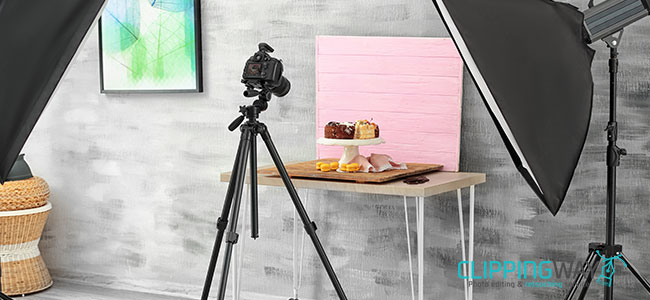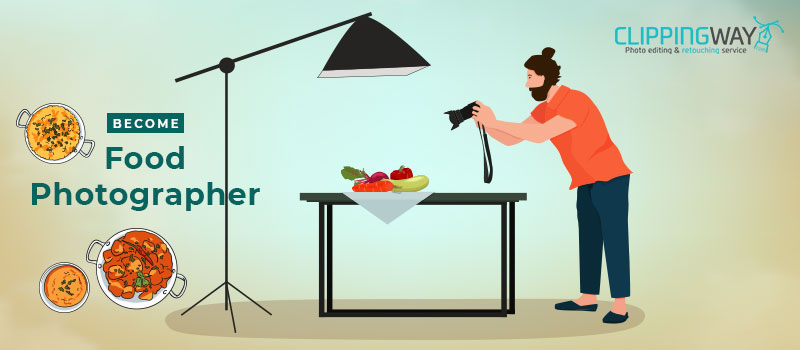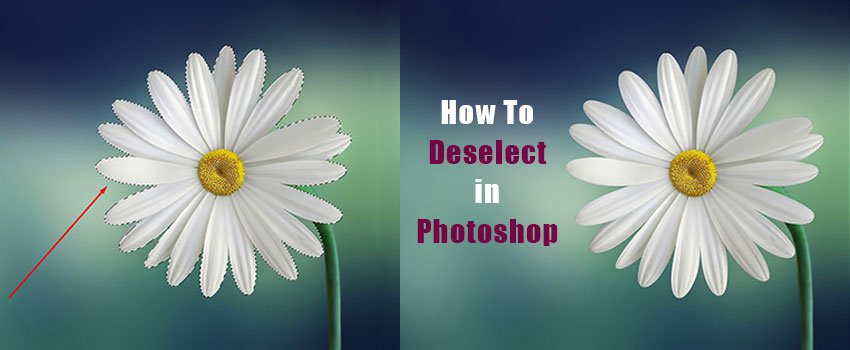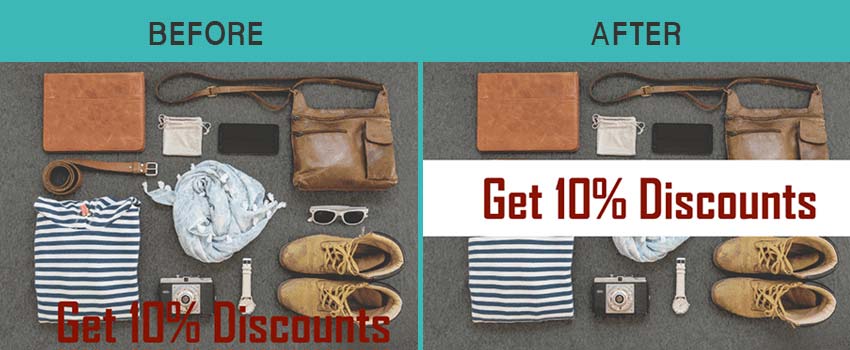Specific photography sectors have their individual requirements, style, and art according to the potential viewers. So, if you want to grow your career as a photographer you have to choose a specific genre. Would you like to try something different from traditional photography? Food photography could be the best choice for you.
The food photography genre is less common than other photography types. The market size of Photography was nearly 13 billion USD in 2023.
There is a huge potential in this field to succeed as a professional photographer. Through this article, we are going to share how to become a food photographer. We are going to cover everything from the photography lighting to getting your first clients.

What is Food Photography?
Food photography is a specific art of photography solely based on capturing food items. Cookbooks, restaurant menus, magazines with food item photos, and food advertising are prime examples of the usage of food photography. Through food photography, food items sellers attract their potential customers.
Food photography is a collaborative effort between food photographers and food makers. It’s a bit different from other photography sectors. Food photographers try to attract viewers through mouth-watering food item images.
Photographers need to make sure that the item looks delicious in the image and it should inspire the viewers to taste the item. Background removal service is a must for food photography.
Purchase Equipment for Food Photography
Though having a smartphone is cable enough to capture attractive food photos. But if you want to become a professional Food photographer you have to go beyond that. Apart from the smartphone, you have to invest in purchasing other photography equipment as well. First of all, you have to purchase a DSLR camera that is suitable for food photography.
Some people may suggest you purchase equipment after gathering knowledge about food photography. But if you purchase it earlier, it will make you concentrate more on learning about photography.
You can choose between the Sony A7R IV, Nikon Z7 II, Sony ZV-1 II, and Canon EOS R6 Mark II. Then, you need to choose a suitable lens for food photography. You should have a primary lens of 50mm.
If you have the budget for a secondary lens, you should choose between 85mm, 90mm, and 100mm prime lenses. You can also use those lenses for practicing other types of photography. Next to that, you will need a tripod so that you can capture food items images without shaking. Ultimately, you will need a reflector and light sources to make your photography shine.

Learn from Food Photography Courses
In 2024, learning about anything will become much easier than before. You can easily find a lot of learning resources online. To become a professional food photographer, you have to invest a lot of time in learning about food photography principles. First of all, it will be better for you to join an online course.
Do you need any special recommendations? You can try the basic food photography course by Andrew Olson. This 6-hour course will cover every basic concept of food photography.
Lots of free resources are also available for free as well. You can watch YouTube channels, read blogs, and magazines, and listen to professional food photographer’s podcasts.
This is going to help you a lot to do better in food photography. As you are going to purchase the equipment before that, it will allow you to implement and execute every tip that you are learning. Having certificates in online food photography courses will give you some additional advantages to get the first projects.

Follow Popular Food Photographers and Food Bloggers
You need to follow popular food photographers and food bloggers on social media platforms. Particularly, you need to follow them on Instagram.
Here are the name of some most popular food photographers that you can follow Henry Hargreaves, Joanie Simon, Wladimir Schohin, Kimberly Espinel, Brent Parker Jones, Skyler Burt, Rachel Korinek, Jackie Alpers, Radhika Penagonda, Caroline Losse, Lucia Marecak, Mowie Kay, Andrew Scrivani, Francesc Guillamet, and Carl Warner.
You need to observe their food photography skills and the way of presentation. After observing several professional food photography styles, you will get an idea about how to develop your own style.
One thing to remember, you should not copy others’ styles. You can impress the customers and clients when you have something new to showcase them. As a newbie, you can get the concept of food styling, arrangement, light source placement, and color combination from popular professional food photographers.

Capture Different Food Items
At this stage, you should have got the basics of how to become a food photographer. But becoming a good photographer is not possible by learning theoretical knowledge only.
You can do better when you have implemented the knowledge practically. To do that, you have to practice all that knowledge that you have learned through photography courses and online resources.
The advantage of food photography is you won’t have any lack of objects. You can start capturing your homemade foods and you can explore your local areas to access street food.
You need to bring yourself beyond any limitation of food item selection. You need to try to capture as much as possible. Are you wondering about which food item will be the best option to get started?
Well, you can start with capturing baking paper, wooden boards, fresh herbs, cake stands, measuring cups, glass jars, vintage cutlery, edible flowers, cast iron skillets, marble slabs, tea towels, white ceramic plates, patterned napkins, linen tablecloths, kitchen utensils, spices, and sprinkles.
Food Photo Editing is Mandatory
This is the step where most of the beginners make the mistake and have to pay for it with losing potential clients. Food Photo Editing is the mandatory step for all food photographers. The ultimate goal of food photography is to capture food items in such a way that will influence viewers to taste the food.
That is never possible with raw photos. Raw food images never look that much mouth-watering. That will deny the primary goal of food photography. To get away with this problem, food photo editing is compulsory.
Food photographers don’t have that time to spend on image post-processing. Outsource Photo Editing Service will be the best solution for this. You should try the best image editing service by Clipping Way.
They have a dedicated team of highly specialized photo editors. They have over 17 years of experience in editing food photography and other product photography. It will get rid of your food photography post-processing requirements.

Creative Food Photography Portfolio
Now, you need to focus on making an impressive food photography portfolio. You need to avoid a common mistake here. Most beginner photographers focus on increasing their photography portfolio based on the photography number. But you need to focus on maintaining quality food photography.
The number of images in your portfolio does not showcase your photography skills. The actual thing that showcases your skill is the way of presentation and your unique style.
At the same time, you need to make a combination of different types of food items in your portfolio to make it presentable for all types of food businesses. You should focus on homemade food, dessert items, different types of cuisines, common restaurant food items, and street food photography.
If you want to enhance your portfolio even more, you should focus on food item styling. You can keep some related vegetables, fruits, or other suitable props to improve the appearance of the food item. At the same time, you should be careful not to decorate with excess elements that overshadow the food.
Showcase Your Food Photography Portfolio to SMBs
When you have an impressive food photography portfolio, you need to approach SMB’s “Small and medium size” business to offer them food photography. As a beginner, it will be easier for you to get clients who are involved with SMBs. When you complete several projects and have some good feedback from the clients, you can send food photography proposals to food magazines.
Restaurant owners, and food items sellers need professional food photography to run their promotional campaigns. If you can convince them that your photography style suits their requirements, they are going to hire you. Let me share some effective tips with you. You should look for if there are any new restaurants around your area.
If you find such a restaurant, it will be your golden opportunity to convert them as your clients. Also, you can offer a free photography session to grab their attention.
Also, it will open new opportunities for you to get individual food items sellers. Nowadays, almost all food sellers and restaurant owners also serve their food thoroughly online. They will require professional food photography for their business.

5 Golden Tips for Better Food Photography
1. Lighting is The Key
Natural light works wonders for food photography. That’s why you should avoid harsh shadows by setting up near a window. You can also try shooting outdoors. Soft, diffused light is like a magic wand that adds warmth and highlights the textures of your dish.
2. Play with Different Angles
Have you ever noticed how your food looks different from various angles? You can experiment with shooting from different perspectives. You need to get down low for an intimate feel or shoot from above for that trendy flat lay.
3. Be Selective About the Background
Your food should be the main part of the attraction in the background. You must opt for clean, simple backgrounds that complement your dish. You can choose wooden surfaces, marble countertops, or even a plain tablecloth as the background.
4. Focus on Composition
You have to focus on composing your shot thoughtfully. Use the rule of thirds to place your dish off-center for a visually appealing image. Also, you can consider the balance of colors and shapes in your frame. A well-composed photo is like a well-plated dish that looks pleasing to the eye.
5. Use Props Wisely
Props can enhance your food photography to the next level. You can use simple utensils, fresh herbs, or a well-placed napkin can add a touch of elegance to your imagery. But remember, less is often more. Don’t overcrowd the scene with too many items. Let your food remain the focal point.
Who Needs Professional Food Photography?
- Restaurant Owners
- Magazine Publishers
- Food item sellers
- Local Food stores
- Food Item-selling brands
- Food Blogger
- Chefs
- Culinary Artists
Sum Up
Now, you have to get a proven roadmap of how to become a food photographer. You have to begin by purchasing the required food photography equipment that we have mentioned. Gradually, you need to move to gathering knowledge about food photography and capturing photos for your portfolio. Hopefully, within a few months, you are going to start getting your photography projects.
As a passionate food photographer, you will require professional image editing services for your images. Clipping Way is available 24/7 for you to fulfill your food photography editing requirements. You can start the journey with a free trial now. No payment or credit card information is required for that.
FAQ’s
How do I become a food and product photographer?
You have to gain knowledge about product photography and food photography. After that, you need to start capturing photos using appropriate equipment to create your attractive portfolio. Then, you have to start looking for potential clients.
Can you make money taking pictures of food?
Restaurants, magazines, frozen food sellers, and fast food-selling companies need professional food photography for advertising and promoting their foods. You can make a lot of money by offering food photography.
Where to start food photography?
If you are new to this field, you can start from the very basics. You can start capturing food photos that you are eating. When you go to a restaurant, you can capture the food items in your unique way. Also, you can capture street food.
How do I start becoming a food photographer?
You can begin by practicing with your phone or camera, capturing your meals, and trying to experiment with different lighting at home.
What equipment do I need to begin food photography?
As a beginner, you can start with a basic camera or smartphone, good natural light, and simple props like plates. You can use some vegetables to decorate the plate.
How can I improve my food styling skills?
You need to study food magazines, cookbooks, or even Instagram. Practice arranging food attractively on plates until it looks as good as it tastes.
How to capture mouth-watering food photos in low light?
To do better food photography, you need to maximize natural light by shooting near windows. Also, you can consider using a reflector and bouncing light off a white surface to reduce shadows.
Which tips to follow to improve editing food photos?
You need to enhance colors, adjust brightness, and don’t overdo any changes. The goal is to make the food look appetizing. If you don’t have enough time or skill to do that, you can outsource your image editing service to Clipping Way.






